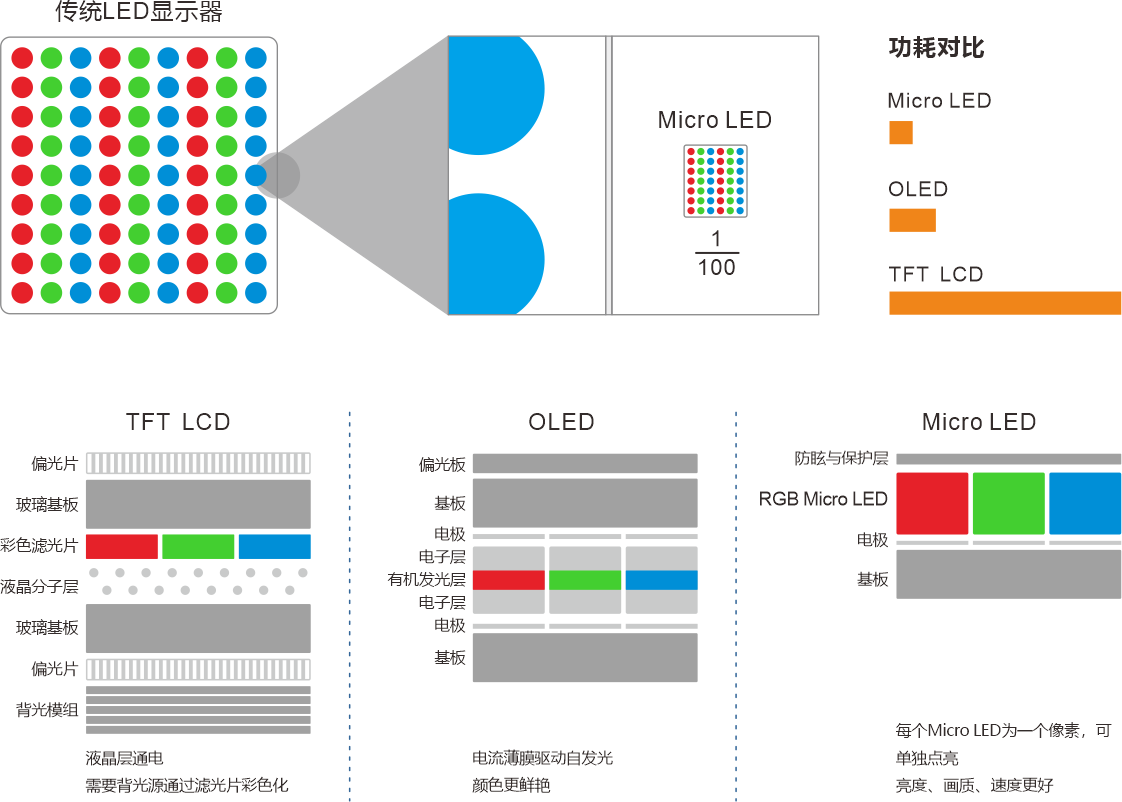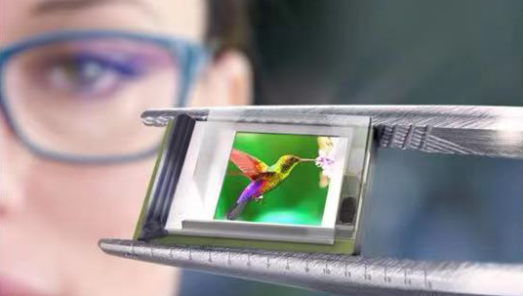Micro LED,将LED背光源微缩化、矩阵化,致力于单独驱动无机自发光(自发光)、让产品寿命更长,尺寸微小,maicro LED晶片长度约1~10μm,仅为 LED的1%,通过大规模转移技术,μm级三色RGB Micro-LED被转移到基板上,形成各种尺寸的Micro-LED显示屏。
中科Micro LED产品优势
1. 高亮度、低功耗、超高解析度与色彩饱和度。
2. 几乎无光耗,寿命长和稳定性。
3. 材料稳定性较佳且无影像烙印。
4. 高速响应,高速调变、承载讯号,具有可视光无线通讯功能。
5. 适应各种尺寸。
6. Micro LED微显示器自发光,无需外加光源,节约成本。
7. 无缝拼接。
8. 应用范畴广。

Micro LED 显示屏

典型器件制备特点
典型尺寸1-100 微米,阵列制备,与驱动集成
典型尺寸300-1000微米,功率较高
外量子效率
工作在低电流密度下:相对较低
工作在高电流密度下:相对较高
工作在较高电流密度下:相对较低
可靠性
面向显示应用,高于传统LCD、OLED显示;面向 通信应用,在高达kA/c㎡电流密度下可靠性良好
面向照明应用,高于传统照明设备
光电调制带宽
数百MHz到>1 GHz
一般5-20 Mhz
与传统LED显示屏比较,Micro-LED的差别主要在于:
1.精密程度数十倍的提升;
2.集成工艺从直插、表贴、COB封装等变成了“巨量微转移”;
3.缺陷可修复性几乎为零;
市场应用:超小型显示器、穿戴式设备、超大室内显示屏幕外,头戴式显示器(HUD)、抬头显示器(HUD)、车尾灯、无线光通讯Li-Fi、AR/VR、投影机等多 个领域。

智能眼镜显示系统

VR显示系统

军用头盔显示系统

高像素PPT显示屏

未来汽车玻璃显示系统

智能穿戴显示系统